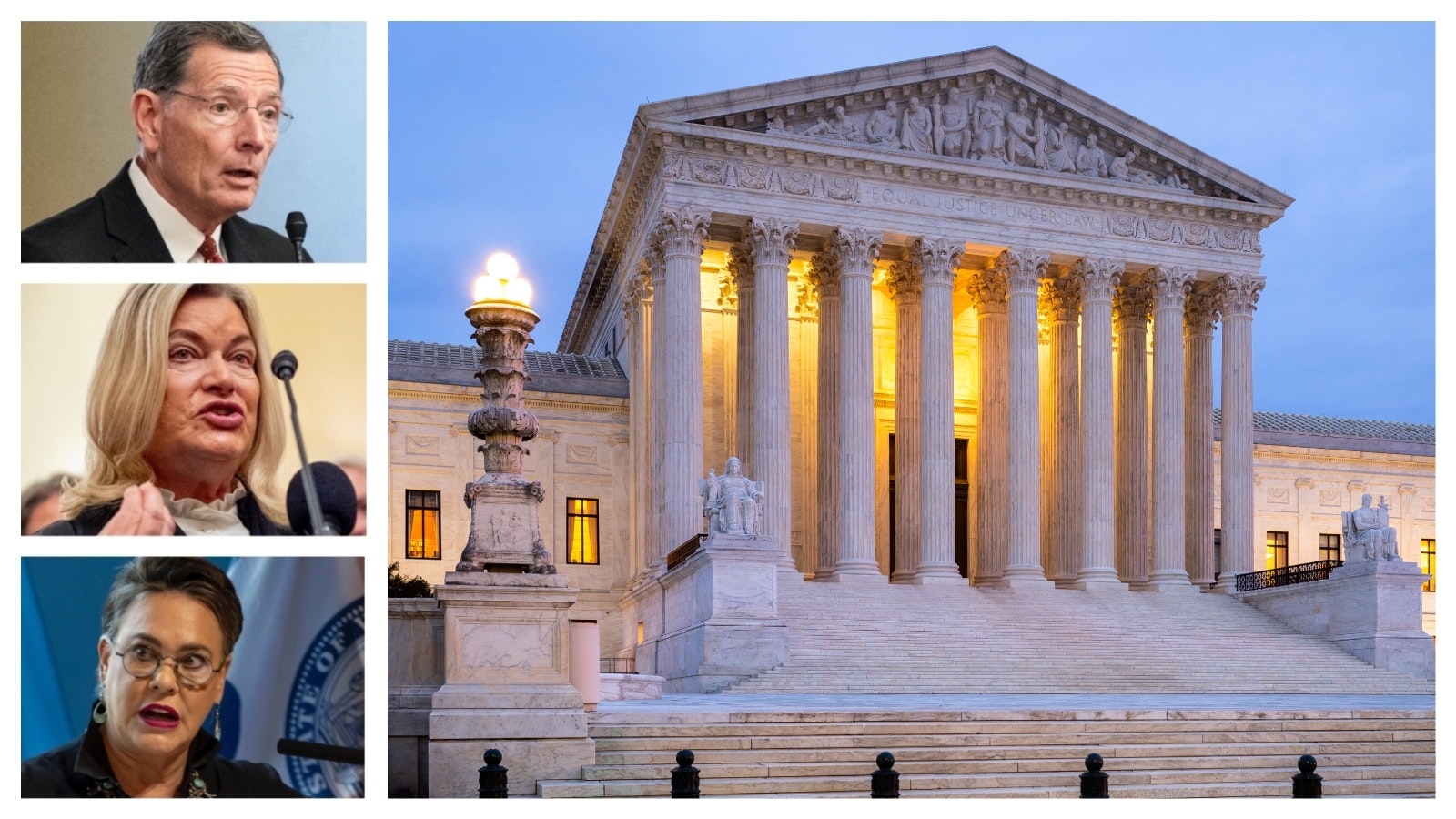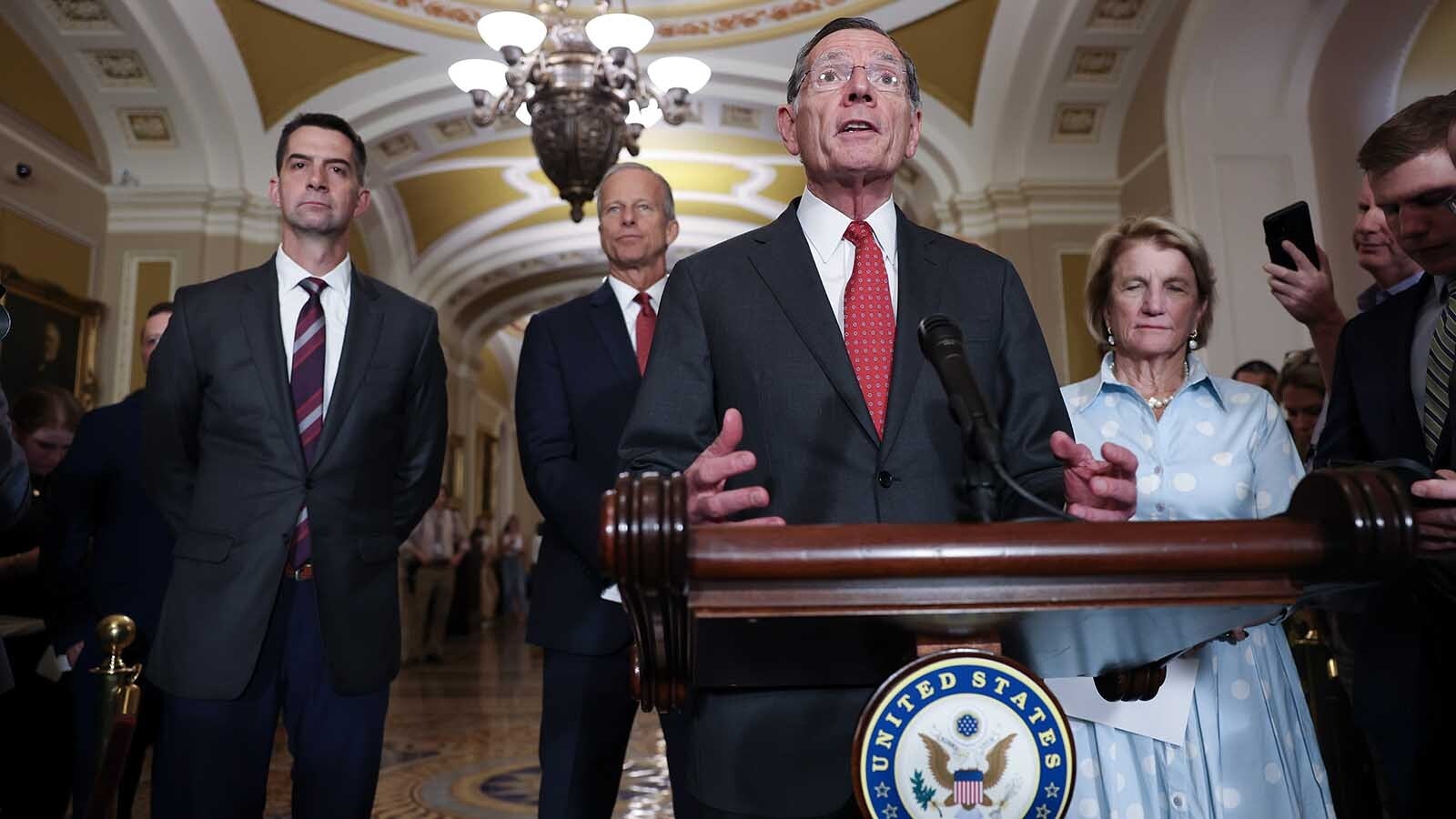Despite concerns among some Republicans that crossover voting might have an impact on the upcoming U.S. House primary, U.S. Sen. John Barrasso said over the weekend he does not believe the practice is prevalent enough to make a difference.
Barrasso speaking on Fox News Sunday, said he simply believes there are not enough Democrats to make a difference in the race, which features, among others, incumbent U.S. Rep. Liz Cheney and Cheyenne attorney Harriet Hageman, who has been endorsed by former President Donald Trump.
“There’s really not that many Democrats out there,” Barrasso said.
As of June 1, only 16% of the state’s voters — 44,643 — were registered as Democrats. This was a decline from the 2020 primary elections, when 18% of the voters were Democrats.
Low-Energy
Joe Barbuto, chairman of the Wyoming Democratic Party, said he has not heard much enthusiasm for Cheney among his party members and is skeptical she will get enough support from Democrats to affect the outcome of the election.
Still, the Cheney campaign sent out mailers to Democratic voters in June explaining to them how they can change their party registration to vote for her.
According to voter registration numbers with the secretary of state’s office, as of June 1, around 4,500 new Republicans had joined the party and registered to vote since January.
Conversely, the Democratic Party lost around 1,500 voters during that same time span and there were about 500 fewer unaffiliated voters. This could have included people who died or moved from the state.
Overall, there were only about 1,500 new registered voters in the state, meaning crossover voting is almost certainly happening.
Competitive
The House race between Cheney and Hageman will likely be the most competitive statewide race in Wyoming since the 2018 gubernatorial race. That race drew 118,101 voters, nearly 11,000 more than the 2020 Republican House primary that Cheney easily won.
In the 2020 House race, 66.5% or 107,363 of registered Republicans cast a vote. In the 2018 Gubernatorial race, 65% of registered Republicans cast a vote. Gov. Mark Gordon won that race by about 9,000 votes.
In 2018, between July 1 and the primary election on Aug. 21, the Republican Party gained about 4,300 voters. In 2020, records showed about 4,000 new voters joining the GOP during the same time span.
Assuming a 66% turnout in this year’s primary — along the increase of 4,300 GOP voters as reported by the secretary of state’s office — the state would be looking at about 135,232 voters in the Aug. 16 GOP primary.
About 2,000 unaffiliated and Democratic voters left their ranks between January and July 1. If all of these people register and vote as Republicans on primary day, their votes would affect 1.4% of the ballots cast in the in the election.
Although that number may seem to be a slim margin, it could be influential if Cheney and Hageman have a particularly close race.
Marginal Impact
Jim King, professor of political science at the University of Wyoming, agreed with this analysis and said only a race with a 1% to 2% margin between candidates wold be significantly affected.
King said many people who think of themselves as Independent voters in Wyoming still often vote in Republican primaries.
“If it gets down to that narrow of a margin, those independent voters and possibly Democrats will be the key,” he said.
In a case with a margin of more than 5% between candidates, King said crossover voting would have no effect.
Former President George W. Bush won the 2000 presidential election with a majority of the electoral vote of only 0.8%.
Close Calls
Florida helped clinch Bush’s election win, which he took by the margin of 537 votes, 0.01% of votes in the Sunshine State.
The 1988 Wyoming U.S. Senate race between Republican Malcolm Wallop and Democrat John Vinich was nearly as close, as Wallop edged Vinich by 1,322 votes, or 0.8% of the total vote.
In the 2010 Gubernatorial race former Gov. Matt Mead only won his primary by 703 votes or 0.7%.
But also muddying the waters are primary voters, a typically less passionate voter pool.
“Determining how many people who didn’t register to vote before signed up to vote for Hageman or Cheney? No clue,” King said.
Allowing people to register to vote or to change their party registration was adopted in 1994 as part of the implementation of the National Voter Registration Act.





